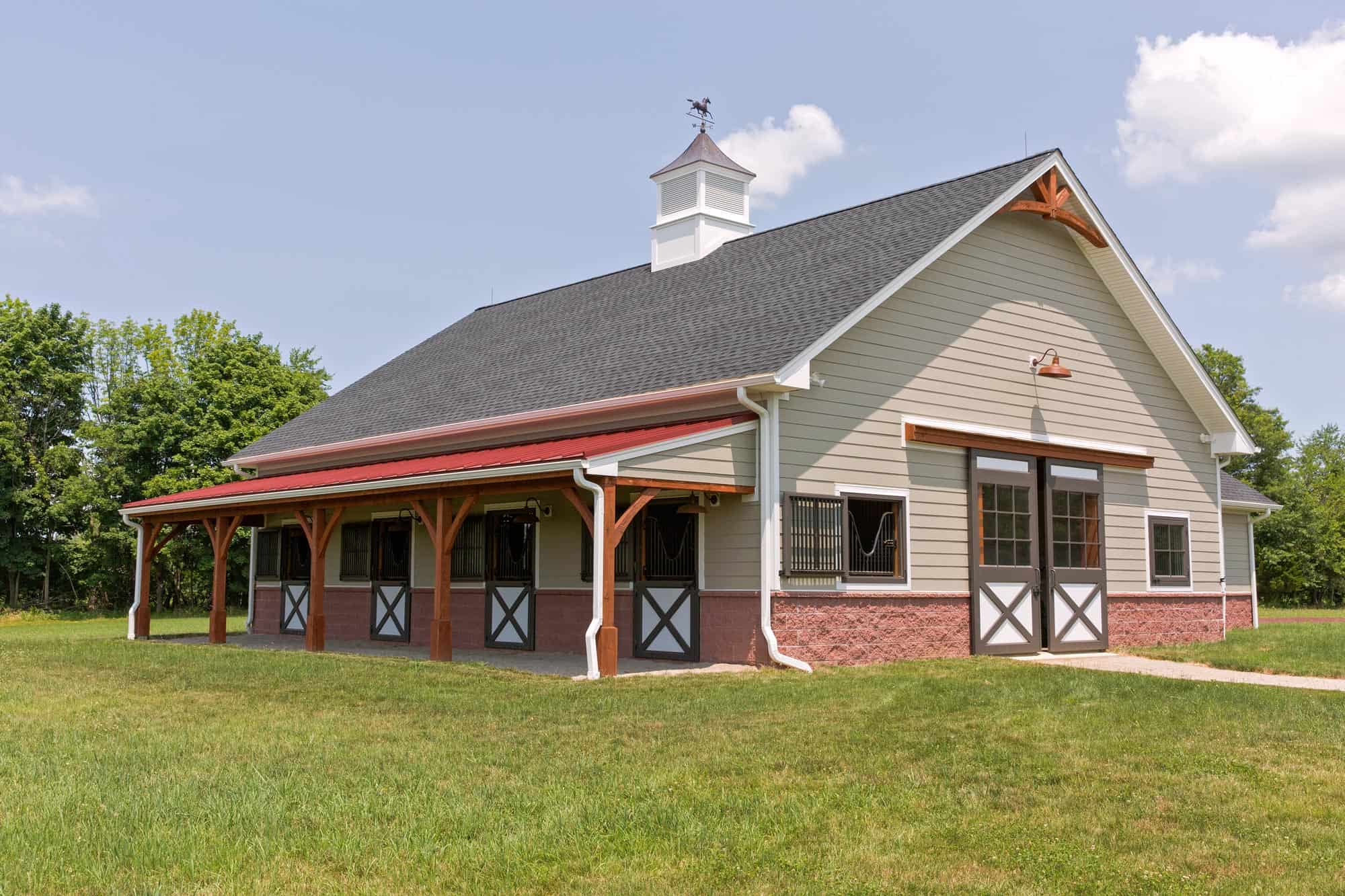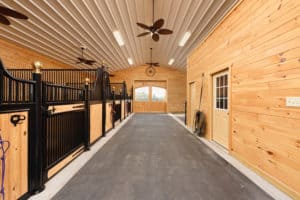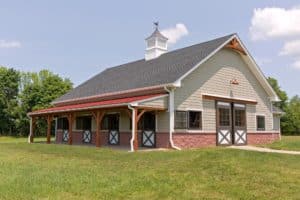
Efficient Agricultural Building Design & Construction
There are as many choices in agricultural building design as there are types of agriculture. Whether you are planning housing, barns, equipment sheds, greenhouses, storage spaces, or even specialized facilities for agritourism or product processing, the right design will create an efficient structure.
Well-built agricultural buildings can save money and improve living conditions while reducing resources. New planning and construction methods using the latest technologies can create structures that save energy and water, use fewer material resources, and create less waste. State-of-the-art building materials can actually be cheaper than traditional brick-and-mortar. They’ll also retain heat and circulate air more efficiently with less energy use.
In addition to energy sustainability and lower costs, efficient agricultural building design and construction also benefits the animals housed in your structure. Well-built barns allow for healthy animals to grow, mature, reproduce and maintain good health.
Site Planning
The most efficient and least costly long-term solution is to design a building that is responsive to the location it will occupy. One of the first steps in building construction is site selection. Savvy designers recommend careful study of potential sites to identify how they are affected seasonally by water, wind and sun. Another important consideration during site planning is the substrate of the site. Soil conditions can make construction more expensive depending on the soil type. Especially in agricultural settings, it’s best to seek a stable, well-drained soil that can support not only a foundation but will excel at water drainage and the tracking of animals.
Lighting & Ventilation
Natural light and ventilation are always preferred for efficient agricultural buildings. Obviously, this reduces mechanical and energy costs. Most climates in the U.S. can support a building designed with only natural sources, but extreme climates of both heat and cold may necessitate the need for supplemental energy sources.
Daylighting
Daylighting is the use of direct sunlight inside a building. Buildings that use maximum natural light can expect lower energy costs. Some systems can supplement the natural light using self-adjusting mechanisms that always maintain a steady level of light. Using energy-efficient windows allow for more light to penetrate the building while reducing the loss of heat or cooling. Window placement is also important to gain the most advantageous placement depending on sun angles and the building’s design. Also, look to beveling window openings to allow more light to enter the room.
Other considerations when naturally lighting the inside of an agricultural building include skylights and passive solar options. There are several options for skylights including clear-glass, diffused-tube and translucent roofing material. Passive solar means using windows for not only lighting but as a heat source. Designing a building for the best capture of passive solar energy through windows can reduce energy consumption and increase efficiency.
Ventilation
Ventilation is an important part of livestock housing, equine arenas, dairy barns, agricultural buildings and greenhouses. It controls several environmental factors by diluting inside air with outside air, affecting air temperature, moisture level, odor and gas concentrations and dust.
There are two types of ventilation in agricultural buildings: passive and mechanical. Passive ventilation uses the existing windows, doors and vents to move air efficiently through the structure. Careful placement of the building can greatly enhance passive air flow. Mechanical ventilation is created by fans, thermostats and air inlets. The most efficient ventilation systems use both methods by fanning stale air out of the building and adding fresh air drawn in through inlets on the opposite side. The main advantage of mechanical ventilation is its improved control over temperature and airflow within the facility even on days when the wind is not blowing.

Renewable Energy for Agricultural Buildings
Efficient agricultural building design and construction can also mean using renewable energy sources like solar and wind to power mechanical systems and increase efficiency. Forward-thinking owners can also use these renewal energy methods to make a profit by creating electricity to send back to the grid. Farms and agricultural facilities lend themselves to the open spaces and exposures needed for these sustainable energy resources.
Solar Energy Systems
Advancements in solar technology have made it a practical and efficient energy source. Lower costs of the systems themselves and their installation can mean practical applications to many agricultural applications including pumping, electric fencing and lighting buildings. Solar panels can be mounted in remote areas using storage batteries to power many farm tasks like the opening and closing of gates and well water pumping.
The USDA Renewable Energy Assistance Program (REAP) provides grants and other funding sources to small-to-mid-sized farmers looking to design and construct renewable energy systems. Wind, solar, renewable biomass, anaerobic digesters, small-hydroelectric, and geothermal are among the energy systems that can be funded by REAP.
Other Renewable Power Sources for Buildings
In addition to the sun, many other renewable power sources exist, and many of them are particularly well-suited to rural sites. Small-scale wind power, biomass generation, micro-hydropower, and methane digesters are all potential sources of renewable power for agricultural buildings.
Finally, installing water-conserving fixtures and appliances is often a part of an efficient energy-savings plan in agricultural settings. For example, capturing rainwater in water-catchment systems using rain barrels or entire runoff collection systems can be used to treat the H2O for drinking or other uses like irrigation. Water from arenas and barns can be captured and stored as well. In the case of horse arenas, it can be used for watering down the footing. This also can mitigate some storm water management costs.
The Future of Efficient Agricultural Building Design & Construction
We’ve touched on just a few efficient agricultural building design and construction methods. As most farmers know, building and maintaining an agricultural operation is time-consuming and complex. Relying on experts to create your next agricultural building is a great first step.
Quarry View Building Group has extensive experience in constructing agricultural buildings. We know that well-designed barns make work more efficient and enjoyable too. Using Amish-quality craftsmanship and experience, whether it’s a livestock facility, horse barn or any other agricultural building, Quarry View provides the expertise needed to build you an efficient structure. Contact Quarry View Building Group about your next agricultural building project today.

